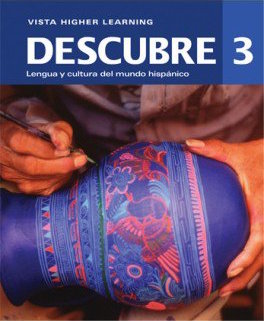
All Solutions
Page 205: Practica
|Words | Logical Meaning|
|–|–|
|1. Protect. |a. Lion. |
|2. Storm. |b. Snake. |
|3. Destruction. |c. Fire. |
|4. Field. |d. Conserve. |
|5. Wild. |e. Thunder. |
|6. Poisonous. |f. Fresh air. |
– The word **Protect** matched with the word **Conserve**. *(1 – d).*
– The word **Storm** matched with the word **Thunder**. *(2 – e).*
– The word **Destruction** matched with the word **Fire**. *(3 – c)*.
– The word **Field** matched with the word **Fresh air**. *(4 – f)*.
– The word **Wild** matched with the word **Lion**. *(5 – a)*.
– The word **Poisonous** matched with the word **Snake**. *(6 – b)*.
|Español|English|
|–|–|
|1. proteger |1.Protect |
|2. tormenta |2. Storm |
| 3. destrucción |3. destrucction |
|4. campo |4. field |
|5. salvaje | 5. savage|
|6. venenosa |6. poisonous |
|Español | English|
|–|–|
|a. león |a. lion |
|b. serpiente |b. snake |
|c. incendio |c. fire |
|d. conservar |d. conserve |
|e. trueno |e. thunder |
|f. aire libre |f. open air |
|Word|Association|
|–|–|
|**1.** proteger |**d.** conservar |
|**2.** tormenta |**e.** trueno |
| **3.** destrucción|**c.** incendio |
|**4.** campo |**f.** aire libre |
|**5.** salvaje |**a.** león |
|**6.** venenosa | **b.** serpiente |
1. *Natural phenomenon in which the sky lights up when there is a storm:* **Relámpago.** *(flash of lightning)*.
2. *A long, narrow-bodied reptile often poisonous:* **Serpiente.** *(snake)*.
3. *Long period without rain:* **Sequía.** *(Drought)*.
5. *Natural phenomenon that occurs when the earth moves abruptly:* **Terremoto.** *(Earthquake)*.
6. *Ferocious animal considered the king of the jungle:* **León.** *(Lion)*.
8. *Noise produced in the clouds by an electric discharge:* **Trueno.** *(Thunder)*.
9. *Mountain series:* **Cordillera** *(Mountain range)*.
10. *Large fire that can destroy houses and fields:* **Incendio** *(Fire)*.
* *
2. Reptil de cuerpo largo y estrecho (narrow) que muchas veces es venenoso: **serpiente.**
* *
* *Long period without rain: drought.*
4. Extensión de tierra donde no suele llover:**desierto.**
* *An area of land where it does not usually rain: desert.*
* *Natural phenomenon that occurs when the earth moves abruptly: earthquake.*
6. Animal feroz considerado el rey de la selva: **león.**
* *Ferocious animal considered the king of the jungle: lion.*
* *Opposite of “húmedo”: dry.*
8. Ruido producido en las nubes por una descarga eléctrica: **trueno.**
* *Noise produced in the clouds by an electrical discharge: thunder.*
* *Series of mountains: mountain range.*
10. Fuego grande que puede destruir casas y campos: **incendio.**
* *Large fire that can destroy houses and fields: incendio.*
|Words | |
|–|–|
|Animals | Environment|
|Coral reefs |Mountains |
|Forest |Landscape |
|Conserve |Protect |
|Coasts |Natural Resource |
|Ocean |Earth |
1. *Biodiversity refers to the great variety of life forms – **animales** (Animals), vegetables, and humans* (.)
2. *(.) that coexist in the **medio ambiente** (environment),*
3. *not only on earth but also in the **mar** (sea)*
5. *High **montañas** (mountains), vast coasts (.)*
6. *And the incredible underwater **paisaje** (landscape) (.)*
8. *There are currently more than sixty-five environmental organizations working to **preservar** (preserve) (.)*
9. *And **proteger** (protect) (.)*
10. *The valuable **recursos naturales** (natural resources) of the Caribbean islands.*
|VOCABULARY | | |
|–|–|–|
|animales / *animals* |costas / *coasts* |paisaje / *landscape* |
|arrecifes de coral / *coral reefs* |mar / *sea* |proteger / *protect* |
|bosques / *forests* |medio ambiente / *environment* |recursos naturales / *natural resources* |
|conservar / *conserve* | montañas / *mountains*|tierra / *land* |
* La biodiversidad se refiere a la gran variedad de formas
de vida -**animales** (1), vegetales y humanas- que
conviven en el (2) **medio ambiente**, no solo en la tierra sino
también en el **mar** (3) . Esta interdependencia
significa que ninguna especie esta aislada o puede vivir por
sí sola. A pesar de que el Caribe comprende menos del once
por ciento de la superficie total del planeta, su territorio
contiene una vasta riqueza de vida silvestre (wild) que se encuentra lo largo de sus **bosques** (4) tropicales húmedos, **montañas** (5) altas, extensas costas, y del increíble (6) **paisaje** submarino de los (7) **arrecifes de coral** Se estima que en la actualidad hay mas de sesenta y cinco organizaciones ambientalistas que trabajan para (8) **conserva** y (9) **proteger** los valiosos **recursos naturales** (10) de las islas caribeñas.
* *Biodiversity refers to the great variety of forms
life -animals, plants and humans- that coexist in the environment, not only on earth but also in the sea. This interdependence means that no species is isolated or can live for Yes, alone. Despite the fact that the Caribbean comprises less than eleven percent of the total surface of the planet, its territory contains a vast wealth of wildlife found throughout its tropical humid forests, high mountains, extensive coastlines, and the incredible underwater landscape of the coral reefs. It estimates that there are currently more than sixty-five environmental organizations working to conservation and protect the valuable natural resources of the Caribbean islands.*

